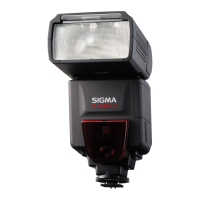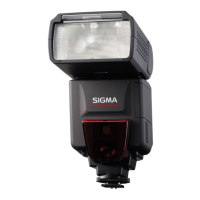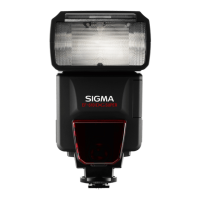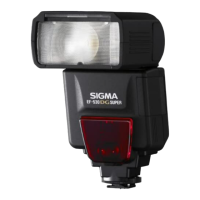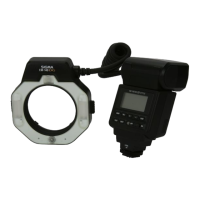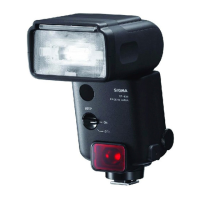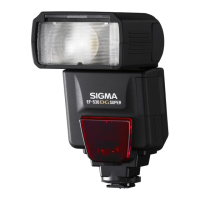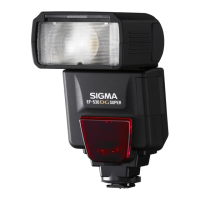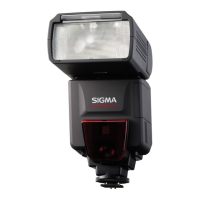
Do you have a question about the Sigma EF-610 - SA-STTL and is the answer not in the manual?
| Bounce Function | Yes |
|---|---|
| Swivel Function | Yes |
| Power Source | 4 x AA batteries |
| Coverage | 24-105mm (17mm with wide panel) |
| TTL | Yes |
| Wireless TTL | No |
| AF Assist Beam | Yes |
| High-Speed Sync | Yes |
| Guide Number | 61 m (ISO 100) |
| Compatible Cameras | Sigma |
| Recycling Time | 0.1 - 4 sec |
| Flash Head Tilt | 0-90 degrees |
| Flash Head Swivel | 270 degrees |
| Flash Modes | TTL, Manual |
Details critical safety warnings regarding electric shock, eye damage, and environmental hazards.
Discusses battery types, compatibility, and general usage advice.
Step-by-step instructions for inserting and securing batteries into the flash unit.
Explains the flash's automatic power-saving feature and its limitations.
Details how the flash unit signals errors, particularly battery-related issues.
Instructions on tilting and positioning the flash head using the lock mechanism.
Procedures for securely mounting and dismounting the flash unit onto a camera.
How to adjust the flash's beam angle for different focal lengths and coverage.
Explains the function and use of the built-in wide panel for wider flash coverage.
How to activate and use the LCD panel backlight for visibility.
Guide to using the flash in TTL automatic mode for exposure control.
How to use the flash with camera's Shutter Priority and Aperture Priority modes.
Information on flash unit overheating and recommended rest periods between shots.
Detailed steps for setting manual flash power levels for precise exposure control.
Using the flash with high shutter speeds for motion capture.
Achieving natural motion blur effects by firing the flash at the end of the exposure.
How to activate the red-eye reduction feature to minimize eye reflections in photos.
Previewing lighting and shadow effects before taking a shot.
Adjusting flash output for precise exposure control, complementing camera settings.
Creating sequential images within a single exposure by rapid flash firing.
Using bounce flash for softer, more diffused lighting by reflecting off surfaces.
Specific guidance for using bounce flash for macro photography.
Using the integrated panel to add catchlights in subjects' eyes.
How to use the flash wirelessly for creative lighting setups without cables.
Steps to establish communication between flash and camera for wireless control.
Using the flash wirelessly with a camera's built-in flash as a trigger.
Setting up master and slave units for wireless flash photography on compatible cameras.
Triggering the flash wirelessly using another flash unit or camera's built-in flash.
Controlling multiple slave flashes using specific channel settings for synchronized firing.
Details on the flash's type, serial control, TTL auto zoom, and guide number.
Information on battery types supported and flash recycling time.
Data on number of flashes, flash duration, and illuminate angle.
Specifications for weight and physical dimensions of the flash unit.
